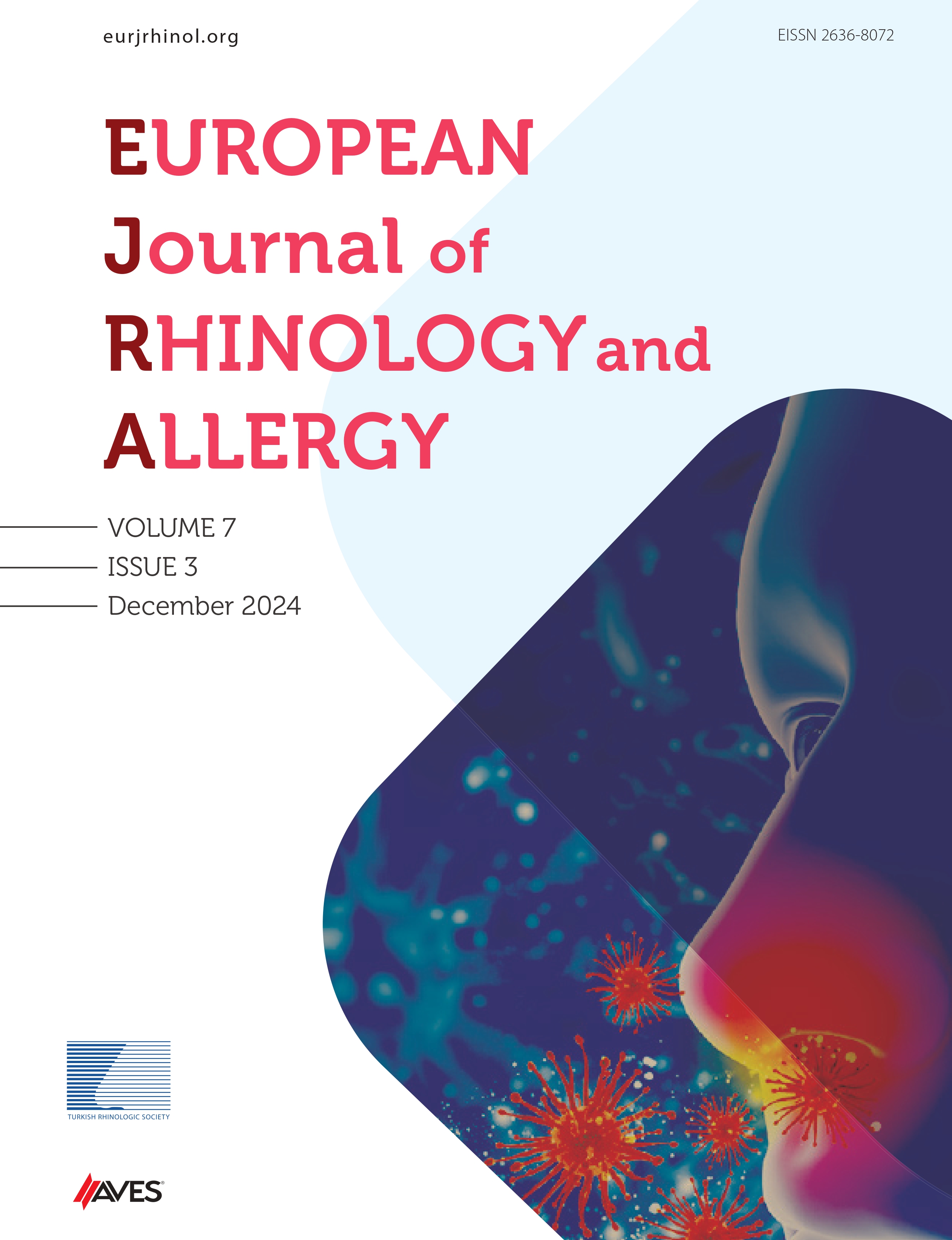Objective: To determine the risk factors for recurrence in endoscopically treated frontoethmoid mucoceles.
Methods: A retrospective study was designed. The patients with frontoethmoidal mucoceles who underwent endonasal surgical approach and followed up for a minimum of 4 years were included. The demographic data of patients, symptoms, etiological and prognostic features, location, and classification of the mucocele were recorded.
Results: Sixty-four patients were included in the study. The mean age of patients was 45.2 [range: 10-83, standard deviation (SD):618.2], and the male: female ratio was 0.72. The mean follow-up duration was 75 months (min. 52, max. 168 months, SD: 42.1). Bone erosion at lamina papyracea was detected in 30 patients (46.9%), orbital roof (n ¼ 20, 31.3%), and ethmoid roof (n ¼ 15, 23.4%). Major complications were encountered in two patients (% 8). During followup (mean: 75 months min. 52, max. 168, SD: 42.1), recurrence was found in eight cases (12.5%). Comparison of risk factors regarding recurrence of mucocele after surgery showed statistical significance for posterior frontal wall dehiscence (P ¼ .014) and revision endoscopic surgery (P ¼ .005). However, further analysis with binary logistic regression, revision nasal endoscopic sinus surgery was the only significant risk factor for mucocele recurrence (P ¼ .047, odds ratio: 6.43).
Conclusion: Endoscopic endonasal marsupialization of frontoethmoid mucoceles is a safe and efficient for management. A long-term follow-up is important for the accurate assessment of recurrence. The presence of revision nasal surgery was a significant risk factor for recurrence, so, more extensive surgeries can be considered to minimize the risk.
Cite this article as: Eren E, İşlek A, Demir UL, et al. Risk Factors for Recurrence in Endoscopically Treated Fronto-Ethmoid Mucoceles: A Multi-Institutional Retrospective Study with Long-term Follow-up. Eur J Rhinol Allergy. 2021;4(3):81-86.

.png)

.png)